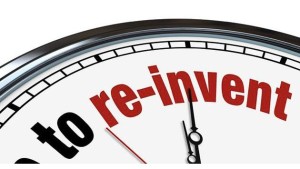When is it Time to Reinvent the Brand Wheel?
We’ve all heard the expression “there’s no need to reinvent the wheel.” Typically, it is used to explain the reasoning behind keeping the status quo, and not taking a chance and making a change where the speaker doesn’t see one being necessary.
A brand strategy approach that takes this route is a risk and reward proposition, and a decision that does not come with a one-size-fits-all aspect. Each brand and each brand marketing approach is different, and the ones that find the most success are those who fit the decision appropriately with the brand.
Brand equity can be one of a company’s strongest and most valuable assets,” says RJ Clouse, Brand Strategy Manager at Addison Whitney. “As it relates to key elements of a brand, I think that reinvention rather than recreation is the key to ongoing and deep emotional connections.”
The Budweiser Clydesdales have become a staple of the brand’s Super Bowl advertising campaigns. For years, it has been a given that at least one of their commercials during the game would either feature or have a tie back to the Clydesdales. It’s what people have come to expect from the brand, and so far they have complied year after year.
Another less famous, but just as powerful for the brand, is Old Spice, says Clouse.
“Old Spice, with heritage in scent and masculinity, reinvented its message of what it means to be masculine in an authentic and humorous way. This approach builds the deep brand connection with a solid foundation in brand equity for a new generation.”
After years of brand equity building connected with this particular ad campaign, how wise would it be for Budweiser to change its approach? In other words, when you know what kind of ad you are getting, and it has been successful in the past, does it make sense to reinvent the wheel?
The answer seemingly lies within the strength of the metaphorical wheel. Is it an essential and part of the foundation for the brand strategy? Or is it an aspect that has made a move recently into its strong point, but seems to have a shelf life?
In the second instance, the rule of thumb seems to be that it is better to make a change one year too soon than one year too late. Brand marketing can withstand a response that consumers miss that characteristic, but that response is preferable to backlash that it has become old and outdated.
This is where brands and marketers need to be one step ahead in the strategic planning. They need to see the writing on the wall and anticipate what is coming down the road when it comes to brand staples and have plans in place before its run ends.
On the other side of the equation, when a brand staple has become synonymous with the brand itself, as difficult as it may be for the creative focus and the creative departments, keeping it around in some fashion is really the best option.
Consumers, for the most part, gravitate toward the familiar when it comes to their branding, and in this case, the familiar is something that can help grow a brand’s trust with the consumer. They see something they recognize in an ad, such as the Budweiser Clydesdales, and they begin to connect the brand with the nostalgia and comfort that these familiar images bring.
“At times, I think recreation may pay off for short-term benefits of increased awareness or trial,” says Clouse. “But these approaches may not build the long-term, deep, emotional brand equities we strive to help brands achieve.”
Addison Whitney is a global branding firm with a passion for building strong brands. We specialize in verbal and visual branding, brand strategy and market research.
To learn more about Addison Whitney, visit our website at AddisonWhitney.com, or contact us here.